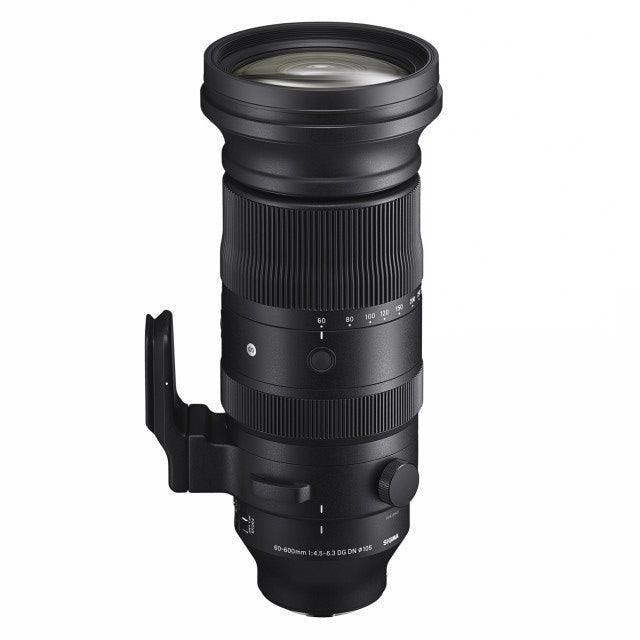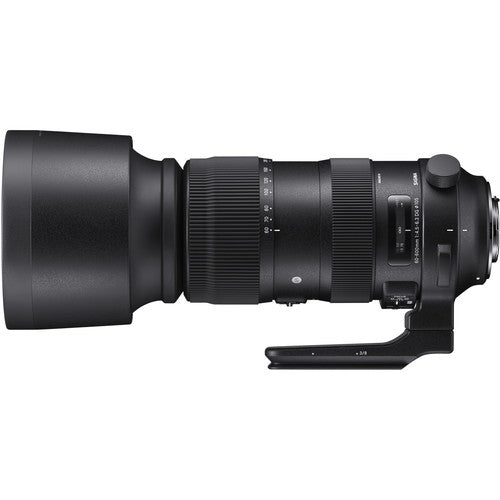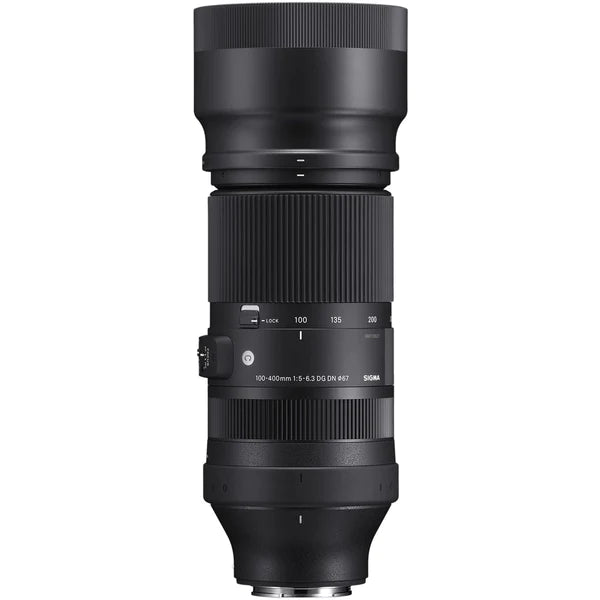Product Description
Sigma 60-600mm f4.5-6.3 DG OS HSM Sports Lens
- Aperture Range: f/4.5 to f/32
- Three FLD Elements, One SLD Element
- Super Multi-Layer Coating
- Hyper Sonic AF Motor
- Intelligent OS Image Stabilization
- Removable Arca-Type Tripod Foot
- TSC Material, Dust- and Moisture-Sealed
- Rounded 9-Blade Diaphragm
- Compatible with Sigma Teleconverters

A single zoom covering a huge 10x range, the Sigma 60-600mm f/4.5-6.3 DG OS HSM Sports Lens is a versatile optic well-suited for a variety of subjects, including portraiture, sports, and wildlife. Its advanced optical design incorporates one SLD element and three FLD elements, which help to greatly suppress chromatic aberrations and colour fringing throughout the zoom range for improved clarity and colour accuracy. A Super Multi-Layer Coating has also been applied to individual elements to control flare and ghosting when working in strong lighting conditions.

Complementing the optical performance is a Hyper Sonic Motor that provides quick and a quiet autofocus performance, along with an Intelligent OS system that minimizes the appearance of camera shake by up to four stops. The physical design of the lens also incorporates several seals to guard against dust and moisture, and a water- and oil-repellent coating has been applied to the exposed elements to prevent moisture, fingerprints, or smudges from sticking to the surface.

As part of the Sports line within Sigma's Global Vision series, this lens is designed to offer excellent optical performance, speed, and other customizable features that make it an ideal choice for wildlife, sports, action, and other fast-moving subjects.
Wide-ranging super telephoto zoom is designed for full-frame Canon EF-mount cameras, however is also suitable for APS-C models where it provides a 96-960mm equivalent focal length range.

One Special Low Dispersion (SLD) element and three F Low Dispersion (FLD) elements are featured in the optical design and help to reduce colour fringing and chromatic aberrations for improved clarity and colour accuracy, as well as spherical aberrations for reduced distortion and improved sharpness throughout the zoom range.

A Super Multi-Layer Coating has been applied to lens elements in order to minimize lens flare and ghosting and contribute to producing contrast-rich and colour-neutral imagery, even in backlit conditions.
Front and rear lens elements have been treated with a water- and oil-repellent coating to benefit working in harsh environmental conditions.

Rounded nine-blade diaphragm contributes to a smooth and pleasing bokeh quality.
The integrated HSM (Hyper Sonic Motor) realizes quick and quiet autofocusing, which is further complemented by an optimized AF algorithm to produce smoother focusing performance. The HSM also permits full-time manual focus control simply by rotating the focus ring at any time.

An Intelligent Optical Stabilizer system minimizes the appearance of camera shake by up to four stops to benefit from making sharper imagery when shooting handheld.
The lens is constructed using a Thermally Stable Composite (TSC) material, along with traditional metals, for greater precision and use in wide temperature variations.
The bayonet mount is constructed from brass for ensured accuracy and durability. Additionally, rubber sealing is incorporated in the mount design to render it dust- and splash-resistant.
























